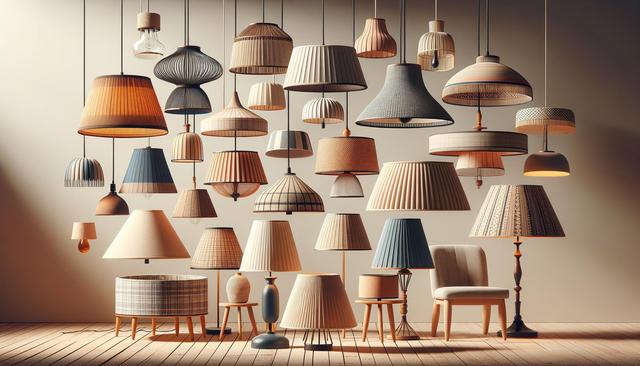The Role of Lampshades in Interior Design
Lampshades play a critical function in both the aesthetic and practical aspects of interior design. While often overlooked, they have the power to transform the atmosphere of a room by diffusing light, altering its direction, and adding visual interest. A well-chosen lampshade can complement the existing decor or serve as a focal point in the space. Whether for a table lamp in the living room or a hanging pendant in the dining area, the right shade can enhance the overall ambiance.
From modern to vintage, and minimalist to ornate, lampshades come in a variety of styles that match different interior themes. Some common materials include fabric, paper, glass, and metal, each contributing to a unique lighting effect. Designers often consider the purpose of the room when selecting a lampshade—softer lighting for bedrooms and brighter, more direct light for workspaces, for example.
Types of Lampshades and Their Features
There are several types of lampshades, each offering distinct characteristics. Understanding these types can help you make informed choices based on your lighting needs and design preferences. Some of the most popular styles include:
- Drum shades: Cylindrical and versatile, ideal for contemporary spaces.
- Empire shades: Narrower at the top and wider at the bottom, often used in traditional designs.
- Bell shades: Curved sides for a classic and elegant appearance.
- Square and rectangular shades: Suitable for modern and geometric aesthetics.
Each shape affects how light is dispersed. For instance, drum and square shades typically direct light both upward and downward, while empire and bell shades focus more light downward, creating a cozier atmosphere. The size of the shade should also be proportional to the lamp base and the surrounding furniture to maintain visual balance.
Choosing the Right Material
Material choices significantly impact how a lampshade filters light and complements a room’s decor. Fabric shades, such as linen or cotton, offer soft, ambient lighting and are available in a range of colors and patterns. Paper shades provide a similar effect but are generally more affordable. For a more dramatic appearance, metal or glass shades can create strong visual statements while directing light more precisely.
When selecting a material, consider the following factors:
- Desired light intensity and direction
- Room’s color scheme and design style
- Maintenance and durability requirements
- Budget and long-term use
Materials like silk may require delicate handling, while synthetic fabrics offer easier maintenance. Textured surfaces or patterns can also add depth and personality to your lighting setup.
Functional Considerations
Beyond aesthetics, lampshades serve vital functional roles. They help diffuse harsh light, protect bulbs from dust, and even reduce glare. The inner lining of a shade influences how much light is emitted. White or reflective linings enhance brightness, while darker linings create a more subdued glow.
Height and width are also important. A shade that’s too small may expose the bulb, creating an unpleasant glare. Conversely, a shade that’s too large can overwhelm the base or surrounding furniture. As a general rule, the shade’s height should be about two-thirds the height of the lamp base, and the width should be at least half an inch wider than the base on each side.
To ensure functional efficiency, also consider:
- Compatibility with bulb type (LED, incandescent, etc.)
- Ventilation for heat dissipation
- Ease of attachment and stability
Tips for Updating Your Lampshade Style
Refreshing your lampshade is a simple way to update your space without a complete redesign. Whether you’re aiming for seasonal changes or a permanent upgrade, switching shades can instantly alter the room’s mood. Start by evaluating your current decor and identifying areas where lighting could be improved or made more cohesive.
Here are a few tips for updating your lampshade style:
- Mix and match lamp bases and shades for a custom look
- Experiment with bold colors or prints to make a statement
- Swap out opaque shades for translucent ones to brighten a dark corner
- Use multiple shades of a similar style to create visual harmony across a room
It’s also helpful to keep spare shades on hand for different occasions or seasons. For instance, lighter materials and colors work well in summer, while richer tones and textures add warmth during colder months. With a bit of experimentation, lampshades can become versatile tools for personal expression and interior enhancement.


